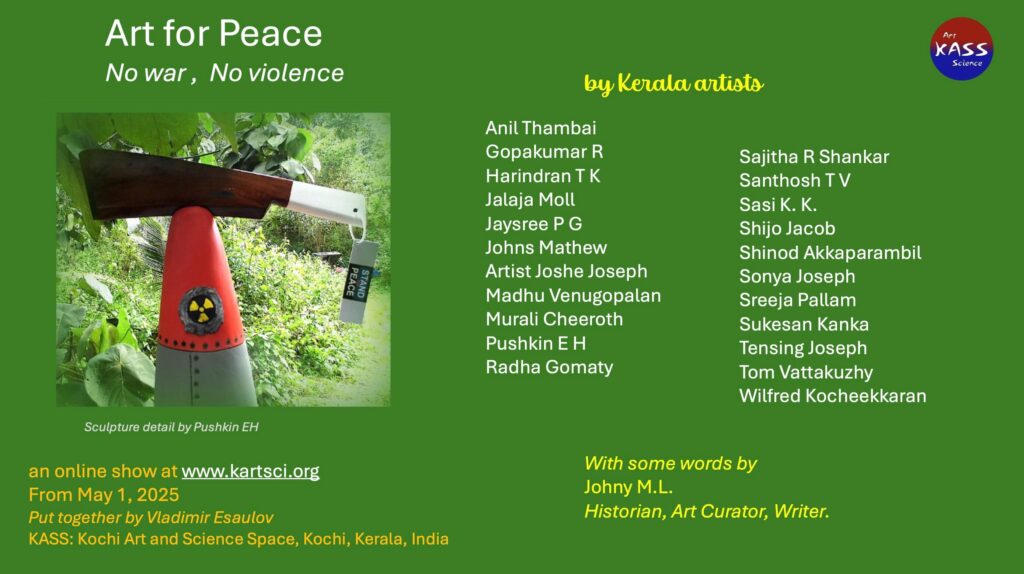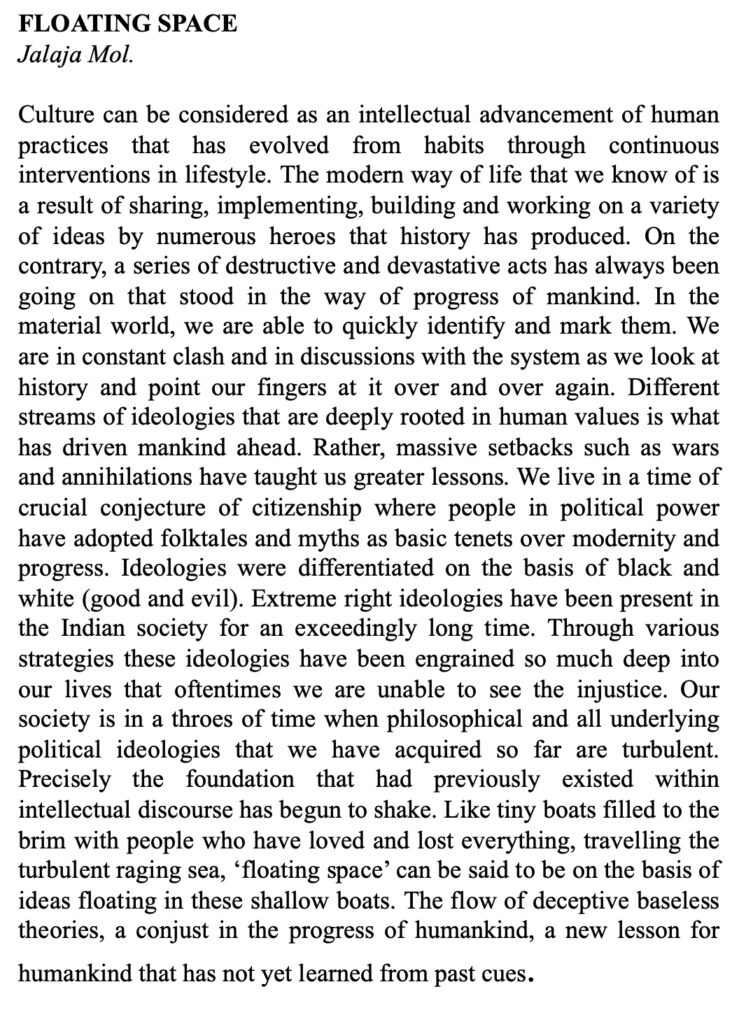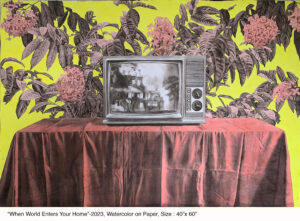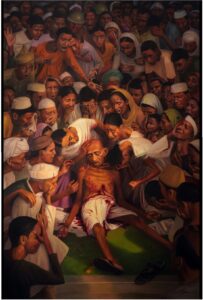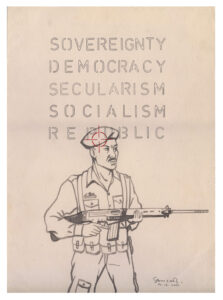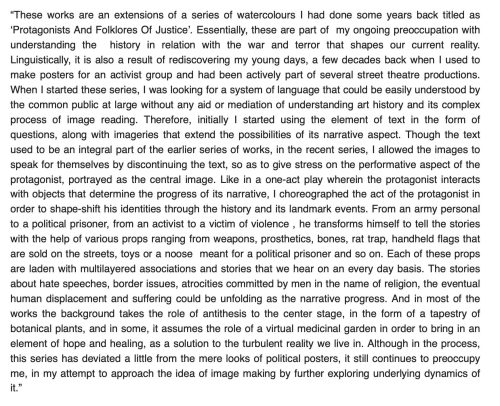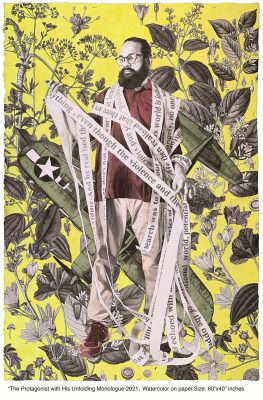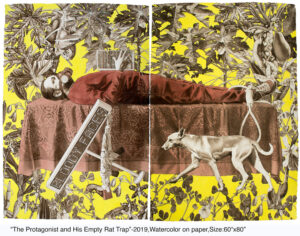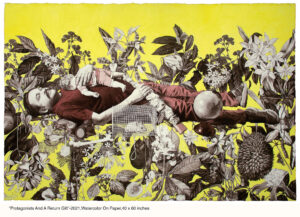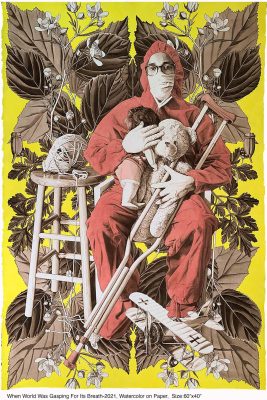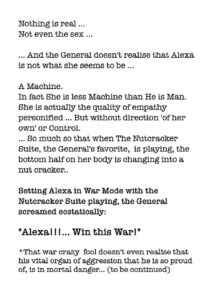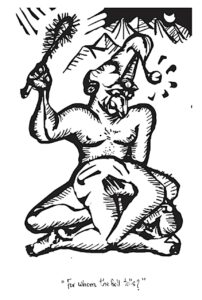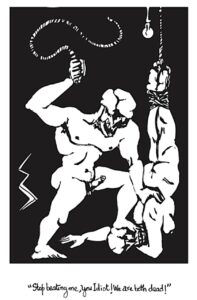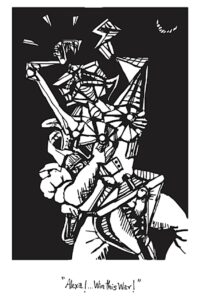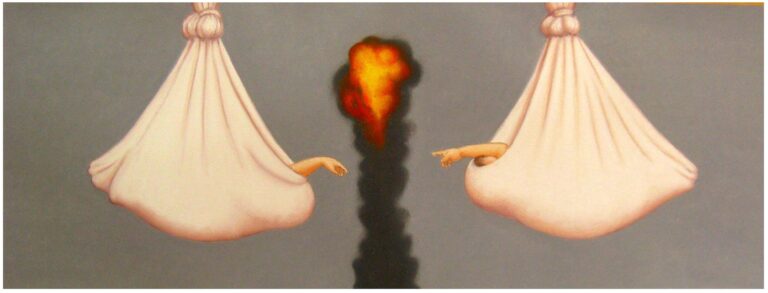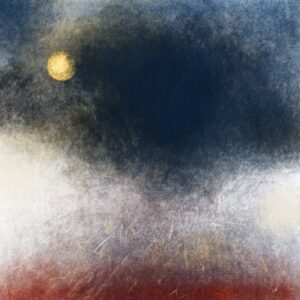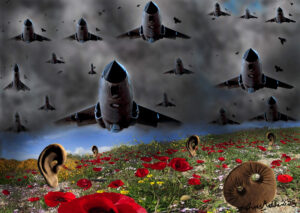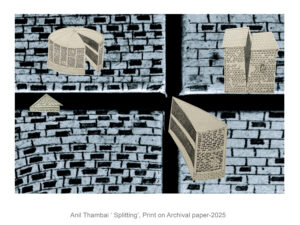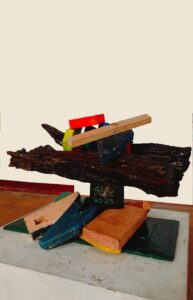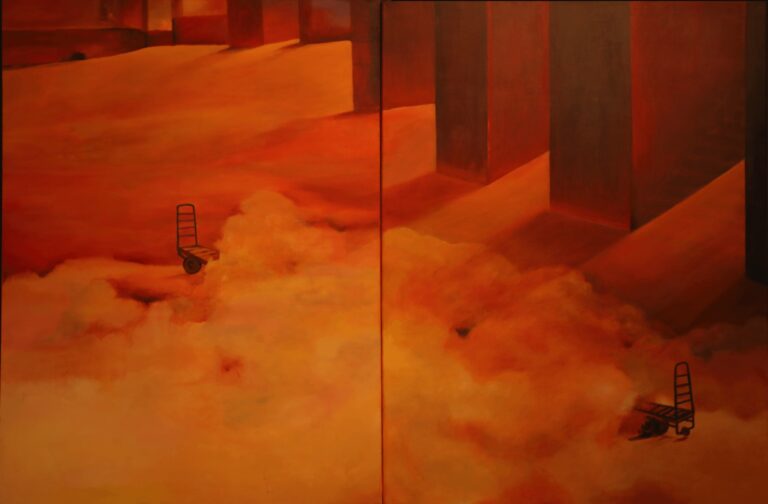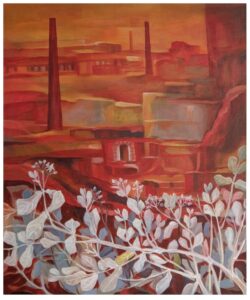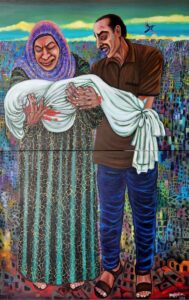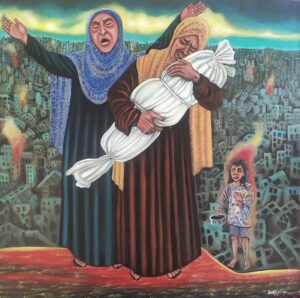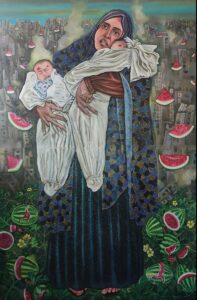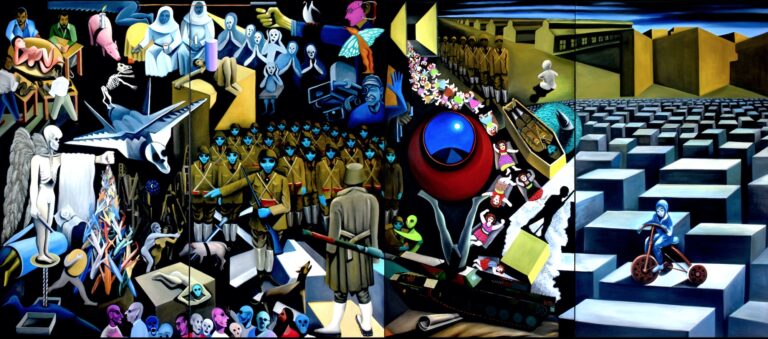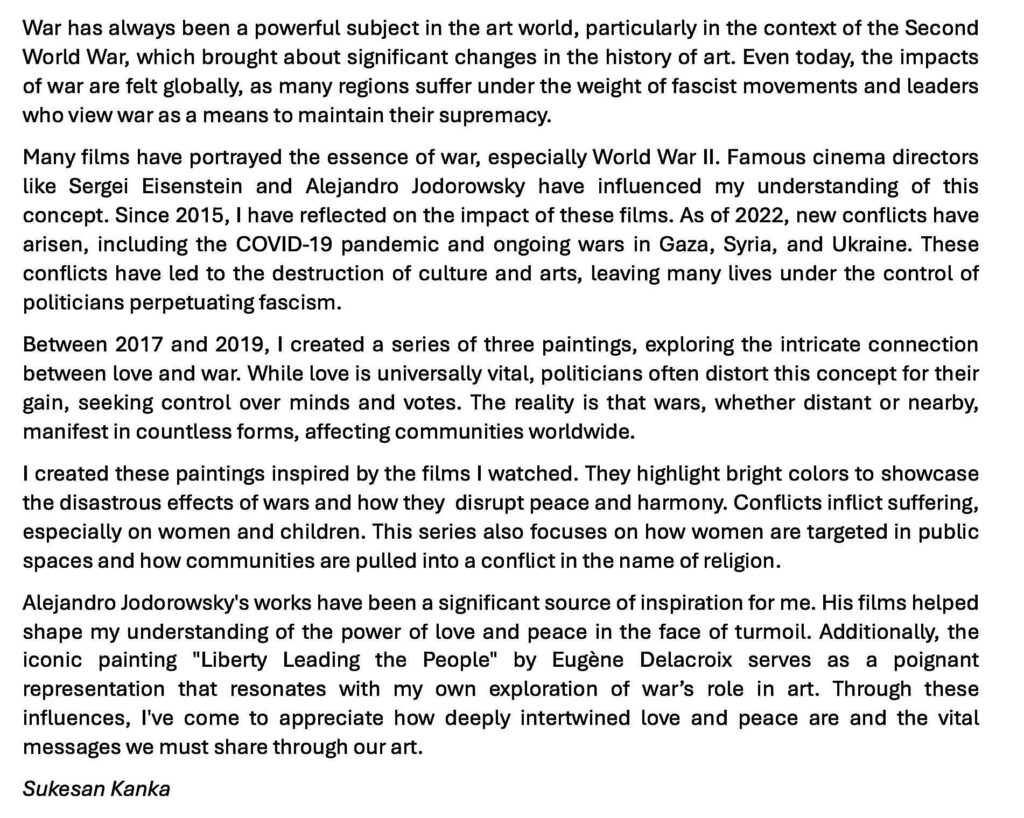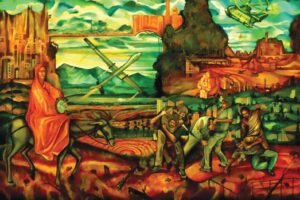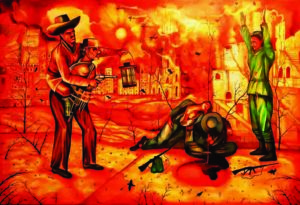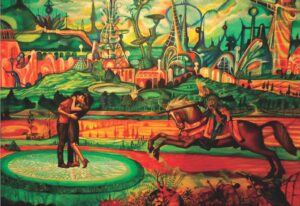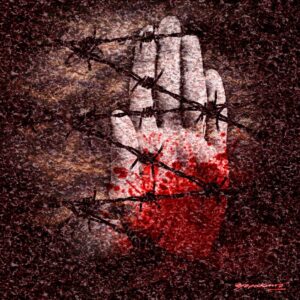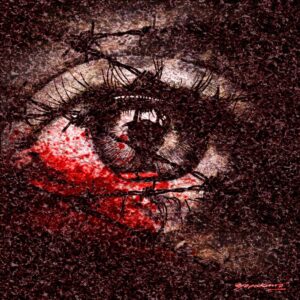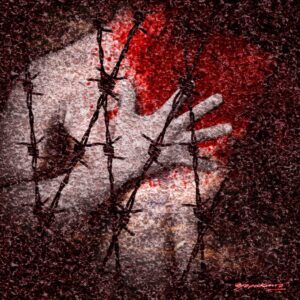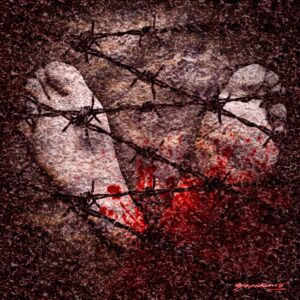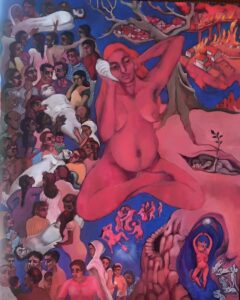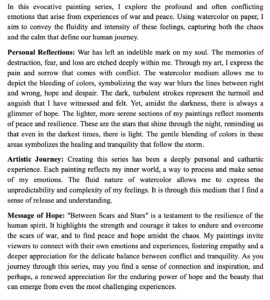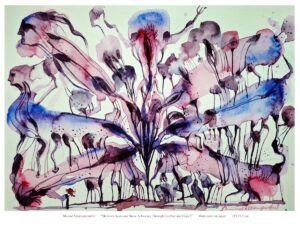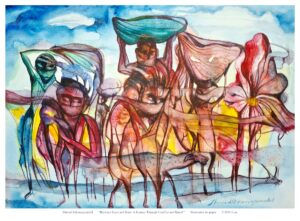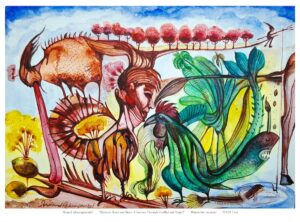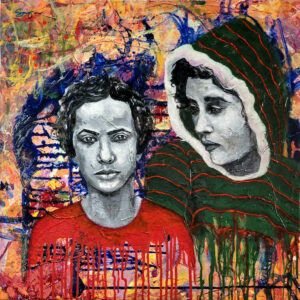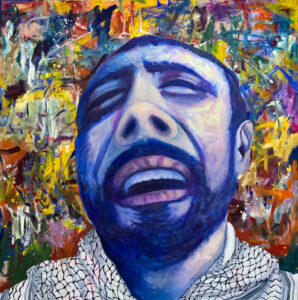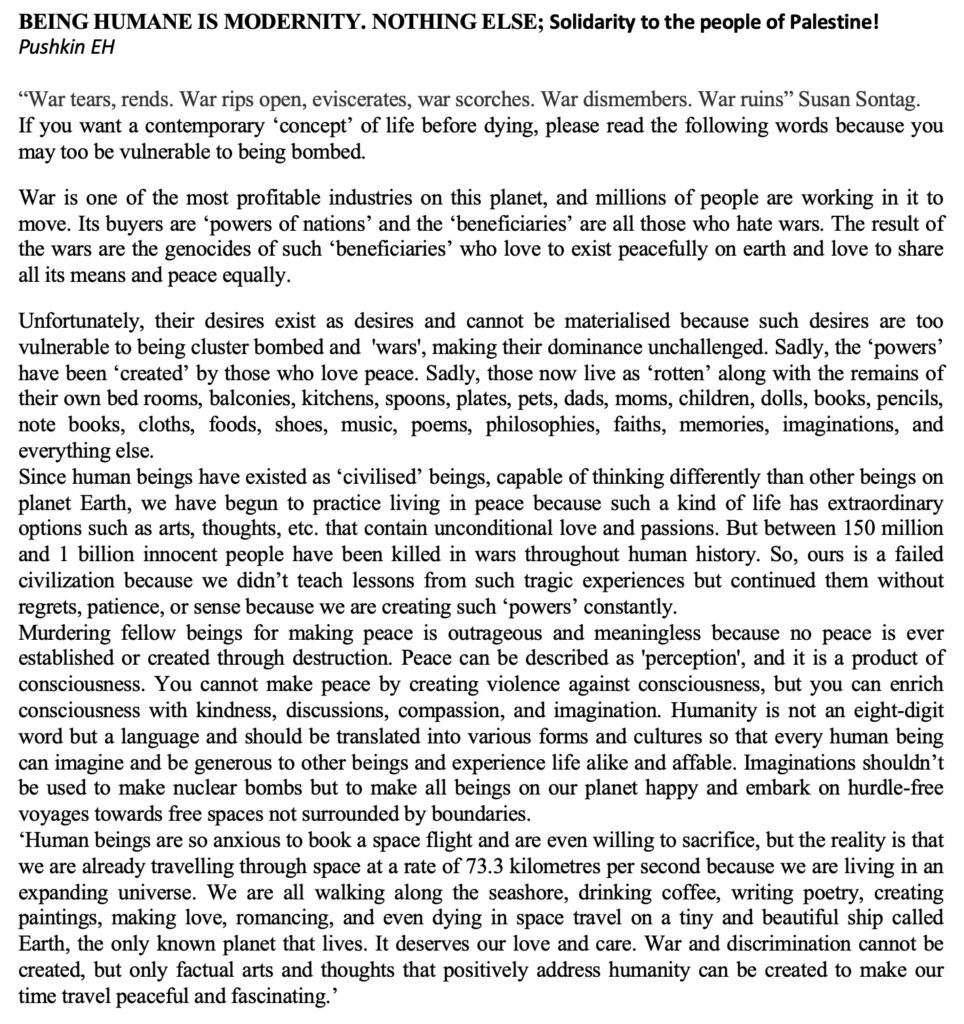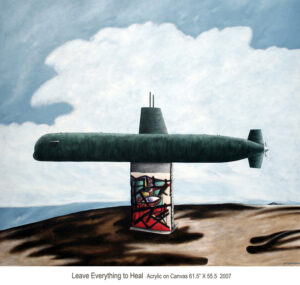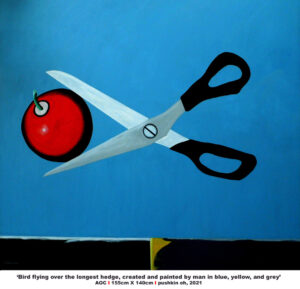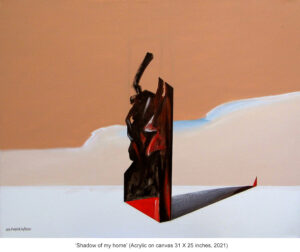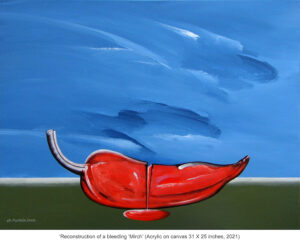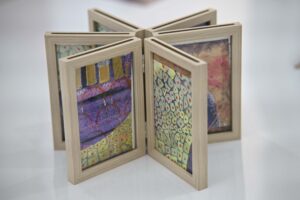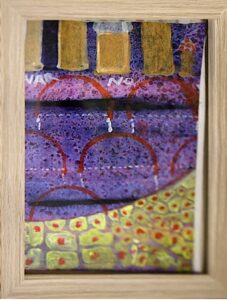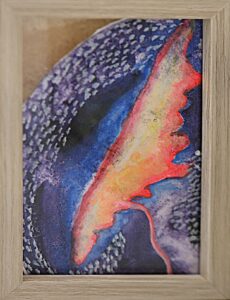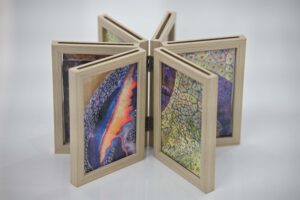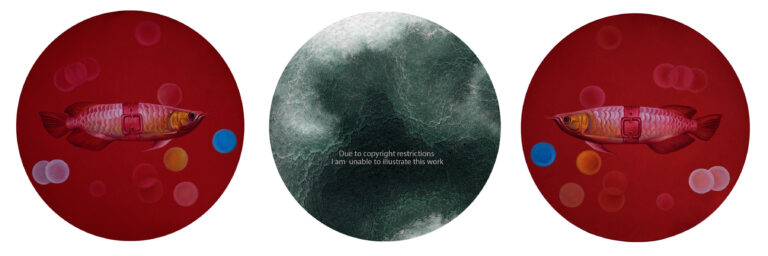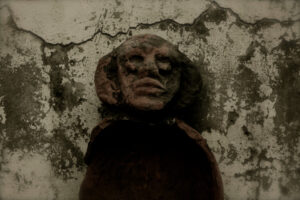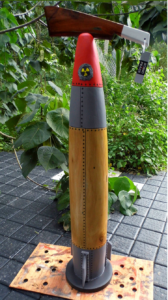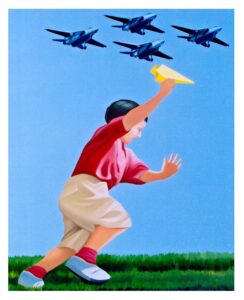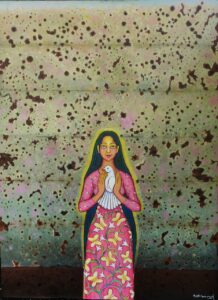Art for Peace and Nonviolence
Art and texts by Kerala Artists.
Click on images to enlarge . Best viewed on a big screen.
CATALOGUE … online soon here.
Johny ML , Art Historian, New Delhi
War is a state of existence. The very idea of peace demands war as a pre-condition. Perhaps, ever since the first human settlements, war has been one driving force of the humans towards ‘progress’. In history, it is categorically stated that all wars are waged for establishing peace. Though it sounds like an irony, we name some of them as ‘mother of all wars’, ‘war of wars’, ‘the war to end all wars’ and so on.
People who live in the war zones and those who live outside them see and experience war differently. Though destruction, deaths and excruciating pains trigger human imagination, for those who undergo the calamities of wars may not immediately translate the ferociousness of wars in real time, except for the war photographers deputed in the fronts or volunteer to do the documentation. People who are away from the war zones ‘imagine a war and its aftermaths’ and give expression to the human conditions there.
Therefore today, the ‘art on war’ should be understood as art of the mediatized experiences of war. Though there are ‘live transmissions’ from the warfronts thanks to technology, for the world outside the zone, the effect and experience of it is a ‘delayed’ one. The temporal rupture that happens during or through mediatization of war events and images, gives the rest of the world sufficient time to see and experience it as a ‘virtual’ one. Baudrillard calls it ‘simulacrum’; a replacement of sorts and as he claimed during the Gulf War, it could be the virtual creation of a war that had never occurred.
Kerala is a southern state in India where war is a mediatized reality. However, perhaps more than any artists from other parts of India, the artists from Kerala express their ideas and views on wars happening elsewhere. Thanks to socio-cultural and political evolutions peculiar to this place, artists are highly sensitive and responsive to the happenings around the world. Even a cursory look at the works displayed in this exhibition reveals that most of the works are empathetic in nature even when they are hugely symbolic and less in narration.
There are two kinds of works in this exhibition; responsive in a symbolic way and explanatory in a narrative way. For the artists, war in itself is not strictly a physical happening using hardcore war weapons; for many of them it is a concept of conflict that operates in various layers of history and manifests in many social processes. As this is a larger backdrop for the artists in this exhibition, none of them seem to be looking at war as a combat zone or a zone of destructions and death, on the contrary they see war as an ‘idea’ that causes various levels of socio-cultural reactions and changes.
Jaysree P G’s work are red landscapes, a symbol of a landscape after or during the battle. There are no signs of death or destruction. But the fiery red could make one feel the severity of a war. Here, for Jaysree, war is an intense feeling which cannot be translated into physical forms. Interestingly, transforming the intensity of a war into a series of totemic symbols is E H Pushkin’s forte. While T V Santhosh gives a narrative edge to the idea of war through a domestic scene of homely happiness suddenly interrupted by a scene of bombing seen in the television.
I do not want to explain the contribution of every artist. However, the common trend is a representational symbolism and semi-narrative as seen in the works of Sreeja Pallom, Madhu Venugopalan, Shijo Jacob and Johns Mathew. Some are emblematic narratives and some are not, but the artistic intention is to tell a story. P S Jalaja’s representation of war is from a different level of understanding about war, as I mentioned in the beginning, the ideological war within the history of Kerala.
This exhibition is a humble symbolic effort to stand up against the atrocities of war and a demand for the prevalence of peace. Though the world order does not go by the aestheticized demands of people, as Milton said, they also serve who stand and stare. This exhibition is a stare at the face of the war mongers. They may stare back at the artists and make them flinch, however, there could be a sense of satisfaction in serving a universal cause in a different way.
Radha Gomaty
Johns Mathew
War in general, either from the very past or to the present, is an act of greed for Power, Domination, manipulation of Resources etc. Most wars took place as a result of disagreement between Power greedy men. But no wars solved the basic issues, instead devastated land, destroyed lives, scattered Love and Unity and shook the existence of all other living beings on Earth. War is a well designed game between Governments, Politicians, Corporates and all those who would benefit from the war. I do not try to narrate the atrocities of war, but try to represent three different visuals related to war.
Anil Thambai
The artwork “Splitting” explores the absence of living space, memory, and historical trace. Through this work, I examine how power-driven forces inevitably lead to ecological destruction, enforced separations, structural collapse, and the fragmentation of architecture. The act of power not only reshapes landscapes but also erases histories, leaving behind remnants of displacement and ruin. By engaging with these themes, my work seeks to uncover the silent, yet persistent marks of destruction embedded in our environment.
Sreeja Pallam
‘Symbols of resistance’ is a series in which strong antiwar politics reacts to the horrors of war, insecurity and human rights violations on the battlefield. The women and children are the worst victims of war. These paintings are a remainder of dawn of peace.
As an artist I would like to be always committed to the society and being as well wisher of the entire mankind and environment.
Tensing Joseph
My most recent paintings are derived from the sensations while I travelled through a kind of psycho-drip between consciousness and sleep. An abstract and indefinable childhood memories that take place inside the mind and when the war happening that women and children suffer the most in the contemporary world, it unfolds like a film. The subject of my images are relational and rational transformations like a reimagining of visual language reminiscent of great masters of filmmakers Fellini and Akiro Kurosawa. In Akiro Kurosawa’s Tunnel of Dreams, Noguchi convinces the viewer that the anxieties of the man in the tunnel reveal the reality of death that is being proclaimed in the minds of all human beings.
Gopakumar R
“Stop, Stop, Stop! War” series captures the urgent plea for peace amidst the chaos of conflict. The artwork conveys deep emotion, showcasing the devastation of war and the longing for harmony. Through vivid imagery and powerful symbolism, it reflects the cries of those affected by violence, emphasizing the need for understanding and compassion. The piece serves as a reminder that every life lost is a story interrupted, urging viewers to consider the impact of their actions and the importance of striving for a world where peace prevails over strife.
Radha Gomaty
Sonya Joseph
My artworks tries to convey the raw experiences of those enduring the Gaza war—the pain of losing homes, loved ones, and the comforting familiarity of their surroundings. Amid forced displacement and destruction, they also shed light on the brutal reality of starvation, a deliberate weapon of war that robs people of dignity and hope.
Yet, within this stark suffering, you also see resilience and an unyielding hope for a free tomorrow. Through my art, I try to highlight the courage of individuals who, even in the darkest moments, dream of reclaiming their lives, rebuilding their communities, and achieving a future unmarked by violence. I wanted to remind viewers of the indomitable human spirit of Palestinians and the universal yearning for their peace and freedom.
Pushkin EH
BEING HUMANE IS MODERNITY. NOTHING ELSE
Sajitha R. Shankar.
Murali Cheeroth
Concept Note: “Due to copyright restrictions, I am unable to illustrate this work.”
This refusal, this absence, becomes the starting point of the work —a silence that speaks volumes about how the image is no longer neutral. In the contemporary condition, the image operates as a geographical statement: a contested zone where national security, cultural identity, and authoritarian control converge.
This image interrogates the visual as both territory and instrument—used to enforce, erase, surveil, and possess. Here, the image functions not merely as representation but as cartography: drawing and redrawing lines of belonging, otherness, and exclusion. The nation becomes a visual regime, and within it, identity becomes a detainee—subject to framing, restriction, and strategic visibility.
Harindran TK
In a time of massive devastation caused by war and conflicts, artificially created by authoritarian rulers of the countries which blindly weaponised up to the head to grab land, and resources of weaker countries and those people. We are all changed, and all aspect of our outlook on life is changed we are tutored daily using trojan wrappings, how to kill, how to annihilate, a mechanised creature is better than a living being, proving with data that the brain by which we are living with is outdated and hopeless, all the creative imaginations are meaningless and worthless to a phantasmic engine, we are re-tamed to parrot within the invisible grid of merchandise. The war is everywhere dehumanising all the beats of intrinsic.
Grains of sand and dreams of mortals. Love -Love Again. Is an artist’s soliloquy, an inner cry and hope of light to vanquish the dark forces. It reminds us of our earthly substance and existence as beings integrated like codes in a primordial tree that speaks the eternal story of existence against a backdrop of unfathomable self-destruction.”
Sasi K.K.
“Centred in the lower portion of the canvas, a girl holds a white dove. This central image expands outward into a mucky, turbulent, and withering space, forming the foundational matrix of the painting’s visual structure. The girl, depicted as calm and innocent with a charmingly coloured dress and a haloed contour, stands out as an icon, evoking a divine presence within the visual tradition. Employing traditional iconic and symbolic language, the work immediately resonates with our current warring times, prompting a prayer for peace. However, the painting’s main feature lies in a reversal of roles: the divine presence, embodied by the girl, holds the symbol of peace, the white dove, and appears to be praying to the viewers. This inversion makes the image strikingly relevant, directly addressing the viewer rather than the viewer seeking solace within the iconic representation.”

